-
 Bitcoin
Bitcoin $79,525.3447
-3.96% -
 Ethereum
Ethereum $1,520.3005
-8.33% -
 Tether USDt
Tether USDt $0.9991
-0.07% -
 XRP
XRP $1.9633
-4.46% -
 BNB
BNB $576.3189
-1.12% -
 USDC
USDC $1.0000
0.01% -
 Solana
Solana $112.5824
-5.23% -
 Dogecoin
Dogecoin $0.1535
-4.78% -
 TRON
TRON $0.2364
-0.90% -
 Cardano
Cardano $0.6069
-4.48% -
 UNUS SED LEO
UNUS SED LEO $9.4088
0.23% -
 Chainlink
Chainlink $12.0344
-5.10% -
 Avalanche
Avalanche $18.2250
-1.28% -
 Toncoin
Toncoin $2.9122
-7.94% -
 Hedera
Hedera $0.1672
-1.11% -
 Stellar
Stellar $0.2293
-5.26% -
 Shiba Inu
Shiba Inu $0.0...01162
-2.75% -
 Sui
Sui $2.1003
-5.84% -
 MANTRA
MANTRA $6.4265
-5.34% -
 Bitcoin Cash
Bitcoin Cash $290.2807
-4.69% -
 Litecoin
Litecoin $73.6913
-3.15% -
 Polkadot
Polkadot $3.4618
-4.96% -
 Dai
Dai $0.9999
-0.02% -
 Ethena USDe
Ethena USDe $0.9986
-0.03% -
 Bitget Token
Bitget Token $4.1857
-1.84% -
 Hyperliquid
Hyperliquid $14.2975
4.41% -
 Pi
Pi $0.5894
-3.38% -
 Monero
Monero $200.7800
-1.19% -
 OKB
OKB $53.0508
-1.64% -
 Uniswap
Uniswap $5.0099
-7.23%
What is slippage in Bitcoin contract trading?
Bitcoin contract trading slippage, the difference between expected and actual execution prices, impacts profitability. Factors like order size, volatility, and exchange liquidity influence slippage; using limit orders and choosing liquid exchanges helps minimize it.
Feb 28, 2025 at 01:30 pm
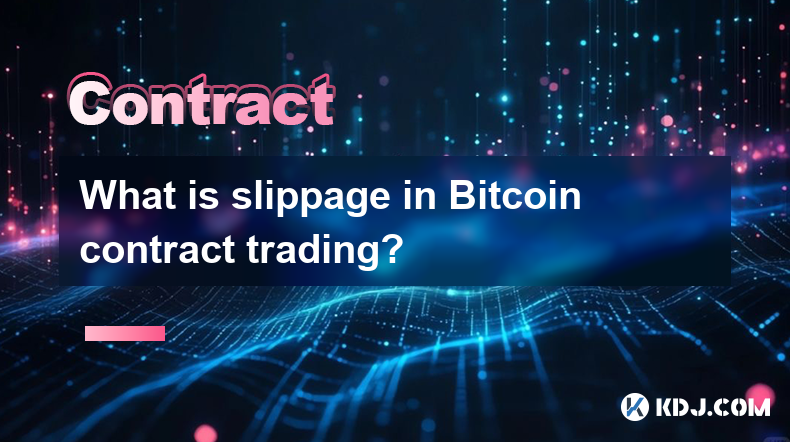
What is Slippage in Bitcoin Contract Trading?
Key Points:
- Slippage is the difference between the expected price of a Bitcoin contract and the actual execution price. This discrepancy arises due to various market conditions and can significantly impact profitability.
- Several factors contribute to slippage, including order size, market volatility, order type, and liquidity. Understanding these factors is crucial for mitigating slippage and improving trading outcomes.
- Strategies to minimize slippage include using limit orders, breaking down large orders into smaller ones, choosing the right exchange with high liquidity, and trading during periods of lower volatility.
- Different types of slippage exist, including positive slippage (rare and beneficial) and negative slippage (common and detrimental).
Understanding Slippage in Bitcoin Contract Trading
Slippage in Bitcoin contract trading refers to the difference between the expected price of a Bitcoin contract (the price you see when you place your order) and the actual price at which the order is executed. This discrepancy can be positive or negative, impacting your overall profitability. Imagine you're looking to buy a Bitcoin contract at $30,000. You place a market order, expecting to buy at that price. However, due to various market factors, the order executes at $30,050. That $50 difference is slippage. This seemingly small difference can accumulate significantly, especially when trading large volumes or in volatile markets.
- Market Dynamics and Order Execution: The core reason for slippage lies in the dynamic nature of cryptocurrency markets. Unlike traditional markets with centralized order books, decentralized exchanges (DEXs) and centralized exchanges (CEXs) operate with constantly fluctuating prices. When you place a market order (an order to buy or sell immediately at the best available price), the price can move before your order is filled. This is particularly true during periods of high volatility, where prices can jump significantly within seconds. The speed of order execution also plays a crucial role. If the market moves quickly, your order might be filled at a less favorable price than anticipated.
- Order Size and Liquidity: The size of your order is directly proportional to the potential for slippage. Large orders, especially in illiquid markets, can significantly move the price against you. When you attempt to buy a large quantity of Bitcoin contracts, your buying pressure pushes the price upward, resulting in a higher execution price than anticipated. Conversely, selling a large quantity can depress the price, leading to a lower execution price than expected. Liquidity refers to the ease with which an asset can be bought or sold without significantly impacting its price. Highly liquid markets have numerous buy and sell orders, making it easier to execute large orders without substantial price movement. Low liquidity markets, on the other hand, are more susceptible to slippage, especially for larger trades.
- Order Type and Algorithmic Trading: The type of order you place also affects the likelihood of slippage. Market orders, as mentioned, are most susceptible to slippage because they execute immediately at the best available price, regardless of the price movement. Limit orders, which specify a maximum buying price or minimum selling price, offer better control but may not always be filled if the price doesn't reach your specified level. Stop orders, triggered when the price reaches a certain level, also carry slippage risk, especially during periods of rapid price changes. Algorithmic trading, involving high-frequency trading bots, can exacerbate slippage. These bots constantly scan the market for opportunities and can quickly execute large orders, potentially impacting the price and causing slippage for other traders.
- Exchange Selection and Trading Fees: Different cryptocurrency exchanges have varying levels of liquidity and trading technology. Choosing an exchange with high liquidity and robust order matching engines can help minimize slippage. Exchanges with low latency (the time it takes for an order to be processed) also reduce the chances of slippage. Furthermore, trading fees, while seemingly unrelated, can indirectly contribute to slippage. High trading fees can reduce your overall profit margin, effectively increasing the impact of slippage.
- Market Volatility and News Events: Market volatility is a significant driver of slippage. During periods of high volatility, such as major news announcements or regulatory changes, prices can swing dramatically, increasing the likelihood of unfavorable slippage. Unexpected news events can trigger large order flows, pushing prices up or down rapidly, making it difficult to execute orders at the desired price.
- Positive Slippage (Rare Occurrence): While most slippage is negative, there are instances of positive slippage. This occurs when the execution price is better than the expected price. For example, if you place a market order to buy at $30,000, but the price drops to $29,950 before execution, you experience positive slippage. This is relatively rare and usually happens in highly volatile markets where prices are rapidly changing.
- Negative Slippage (The Usual Case): Negative slippage is far more common than positive slippage. It occurs when the execution price is worse than the expected price. This is the type of slippage that traders typically aim to minimize. Negative slippage can significantly eat into profits, especially when trading large volumes or in volatile conditions.
- Minimizing Slippage Strategies: To mitigate slippage, traders employ various strategies. These include breaking down large orders into smaller ones (to avoid significantly impacting the market price), using limit orders (to set a maximum price), selecting exchanges with high liquidity (to ensure swift and efficient order execution), and trading during periods of lower volatility (to reduce the chances of rapid price movements).
FAQs
Q: What is the difference between slippage and spread?
A: Slippage is the difference between the expected execution price and the actual execution price. Spread, on the other hand, is the difference between the bid price (the highest price a buyer is willing to pay) and the ask price (the lowest price a seller is willing to accept). Slippage happens after you place an order, while spread exists before you place an order and reflects the market's immediate buying and selling pressure.
Q: Can slippage be completely avoided?
A: No, slippage cannot be completely avoided. It's an inherent risk in all market trading, especially in volatile markets like cryptocurrencies. However, understanding the factors that contribute to slippage and implementing appropriate strategies can significantly minimize its impact.
Q: Is slippage more prevalent in spot trading or contract trading?
A: Slippage can occur in both spot and contract trading. However, contract trading, due to its leverage and often higher volatility, may be more susceptible to slippage, particularly during periods of rapid price movements.
Q: How can I track slippage in my Bitcoin contract trading?
A: Most cryptocurrency exchanges provide transaction history detailing the execution price of your orders. By comparing the execution price to the expected price (the price you saw when placing your order), you can calculate the slippage incurred on each trade. Some trading platforms also provide slippage analysis tools to help monitor and manage slippage more effectively.
Q: What is the best way to deal with significant slippage?
A: Dealing with significant slippage often involves reviewing your trading strategies and risk management practices. Consider using limit orders instead of market orders, reducing order sizes, choosing exchanges with higher liquidity, and trading during less volatile periods. You should also analyze your trading history to identify patterns and improve your decision-making process to avoid similar situations in the future. Diversifying your trading across multiple exchanges can also help to mitigate the risk of significant slippage on any single exchange.
Q: Does high-frequency trading (HFT) always cause negative slippage?
A: While HFT can contribute to negative slippage for other traders, it's not always the case. HFT algorithms are designed to profit from market inefficiencies, and in some instances, their actions might inadvertently lead to positive slippage for other participants. However, the overall effect of HFT on market liquidity and slippage is complex and not fully understood.
Q: How does leverage affect slippage in Bitcoin contract trading?
A: Leverage amplifies both profits and losses. This means that even small amounts of slippage can significantly impact your overall returns when trading with leverage. A small negative slippage with high leverage can lead to substantial losses, while a small positive slippage can only marginally improve your returns. Therefore, traders using leverage should be particularly mindful of slippage and employ risk management techniques to mitigate its impact.
Disclaimer:info@kdj.com
The information provided is not trading advice. kdj.com does not assume any responsibility for any investments made based on the information provided in this article. Cryptocurrencies are highly volatile and it is highly recommended that you invest with caution after thorough research!
If you believe that the content used on this website infringes your copyright, please contact us immediately (info@kdj.com) and we will delete it promptly.
- The Best New Cryptocurrency Presales to Invest in Right Now
- 2025-04-11 07:55:12
- Kiyosaki Predicts Bitcoin Will Lead to Generational Wealth, Warns Against Missing Out
- 2025-04-11 07:55:12
- The crypto market is recovering after five weeks of heavy selling. The uptick indicates renewed enthusiasm for high-potential projects and prospects of massive rewards.
- 2025-04-11 07:50:13
- Remittix (RTX) May Displace Tron (TRX) and Cardano (ADA) in the Top 10 Cryptocurrencies
- 2025-04-11 07:50:13
- Ethereum (ETH) Grapples with the Formidable $2,100 Resistance Level
- 2025-04-11 07:50:12
- As the crypto market keeps to conform, buyers are searching out projects with robust growth capability in 2025
- 2025-04-11 07:50:12
Related knowledge
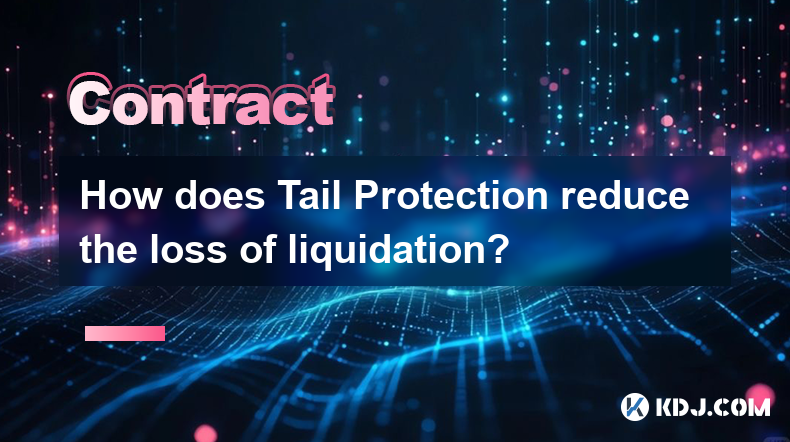
How does Tail Protection reduce the loss of liquidation?
Apr 11,2025 at 01:50am
Introduction to Tail Protection in CryptocurrencyTail Protection is a mechanism designed to mitigate the risks associated with liquidation in cryptocurrency trading. Liquidation occurs when a trader's position is forcibly closed by the exchange due to insufficient margin to cover potential losses. This often happens in leveraged trading, where traders b...

Why does a perpetual contract have no expiration date?
Apr 09,2025 at 08:43pm
Perpetual contracts, also known as perpetual futures or perpetual swaps, are a type of derivative product that has gained significant popularity in the cryptocurrency market. Unlike traditional futures contracts, which have a fixed expiration date, perpetual contracts do not expire. This unique feature raises the question: why does a perpetual contract ...
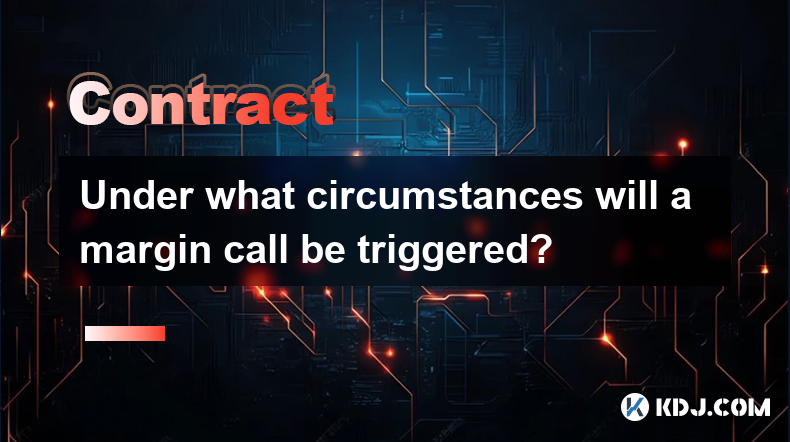
Under what circumstances will a margin call be triggered?
Apr 08,2025 at 02:43pm
Margin trading in the cryptocurrency market allows traders to borrow funds to increase their trading position, potentially amplifying both gains and losses. A critical aspect of margin trading is understanding when a margin call might be triggered, as it can significantly impact your trading strategy and financial health. In this article, we will explor...
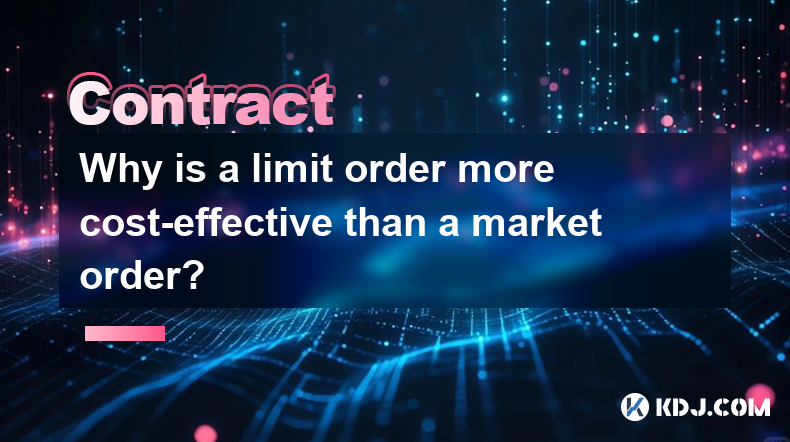
Why is a limit order more cost-effective than a market order?
Apr 10,2025 at 01:35pm
Why is a limit order more cost-effective than a market order? When trading cryptocurrencies, choosing the right type of order can significantly impact the cost-effectiveness of your transactions. Two common types of orders are limit orders and market orders. Understanding the differences between them can help you make more informed decisions and potenti...
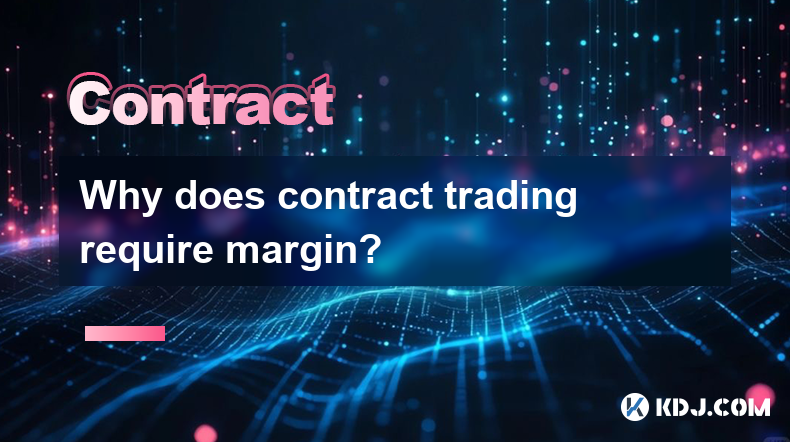
Why does contract trading require margin?
Apr 08,2025 at 02:07pm
Introduction to Contract TradingContract trading in the cryptocurrency market refers to the practice of trading futures or options contracts. These contracts allow traders to speculate on the future price of a cryptocurrency without actually owning the underlying asset. One of the key components of contract trading is the use of margin. Margin is essent...
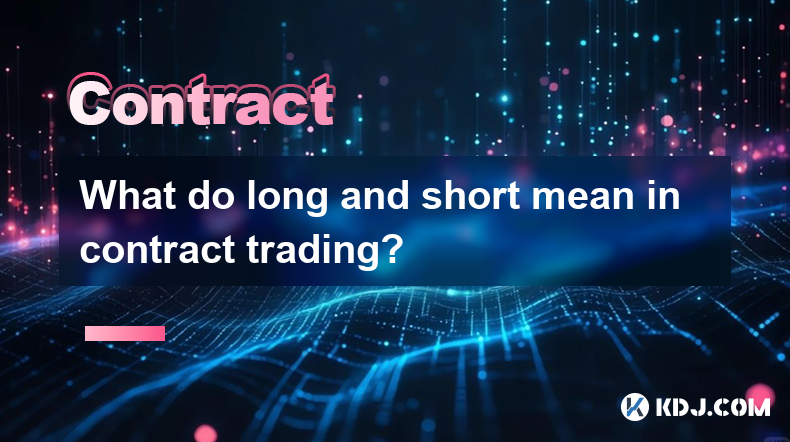
What do long and short mean in contract trading?
Apr 10,2025 at 06:42am
In the world of contract trading within the cryptocurrency circle, the terms 'long' and 'short' are fundamental concepts that every trader needs to understand. Long and short positions refer to the strategies traders use to bet on the future price movements of cryptocurrencies. When you take a long position, you are essentially betting that the price of...

How does Tail Protection reduce the loss of liquidation?
Apr 11,2025 at 01:50am
Introduction to Tail Protection in CryptocurrencyTail Protection is a mechanism designed to mitigate the risks associated with liquidation in cryptocurrency trading. Liquidation occurs when a trader's position is forcibly closed by the exchange due to insufficient margin to cover potential losses. This often happens in leveraged trading, where traders b...

Why does a perpetual contract have no expiration date?
Apr 09,2025 at 08:43pm
Perpetual contracts, also known as perpetual futures or perpetual swaps, are a type of derivative product that has gained significant popularity in the cryptocurrency market. Unlike traditional futures contracts, which have a fixed expiration date, perpetual contracts do not expire. This unique feature raises the question: why does a perpetual contract ...

Under what circumstances will a margin call be triggered?
Apr 08,2025 at 02:43pm
Margin trading in the cryptocurrency market allows traders to borrow funds to increase their trading position, potentially amplifying both gains and losses. A critical aspect of margin trading is understanding when a margin call might be triggered, as it can significantly impact your trading strategy and financial health. In this article, we will explor...

Why is a limit order more cost-effective than a market order?
Apr 10,2025 at 01:35pm
Why is a limit order more cost-effective than a market order? When trading cryptocurrencies, choosing the right type of order can significantly impact the cost-effectiveness of your transactions. Two common types of orders are limit orders and market orders. Understanding the differences between them can help you make more informed decisions and potenti...

Why does contract trading require margin?
Apr 08,2025 at 02:07pm
Introduction to Contract TradingContract trading in the cryptocurrency market refers to the practice of trading futures or options contracts. These contracts allow traders to speculate on the future price of a cryptocurrency without actually owning the underlying asset. One of the key components of contract trading is the use of margin. Margin is essent...

What do long and short mean in contract trading?
Apr 10,2025 at 06:42am
In the world of contract trading within the cryptocurrency circle, the terms 'long' and 'short' are fundamental concepts that every trader needs to understand. Long and short positions refer to the strategies traders use to bet on the future price movements of cryptocurrencies. When you take a long position, you are essentially betting that the price of...
See all articles




















![🐢Super Mario World Koopa Troopa 100% 96⭐️ + Coin [Ao Vivo] 🐢Super Mario World Koopa Troopa 100% 96⭐️ + Coin [Ao Vivo]](/uploads/2025/04/10/cryptocurrencies-news/videos/super-mario-koopa-troopa-coin-ao-vivo/image-1.webp)


































































